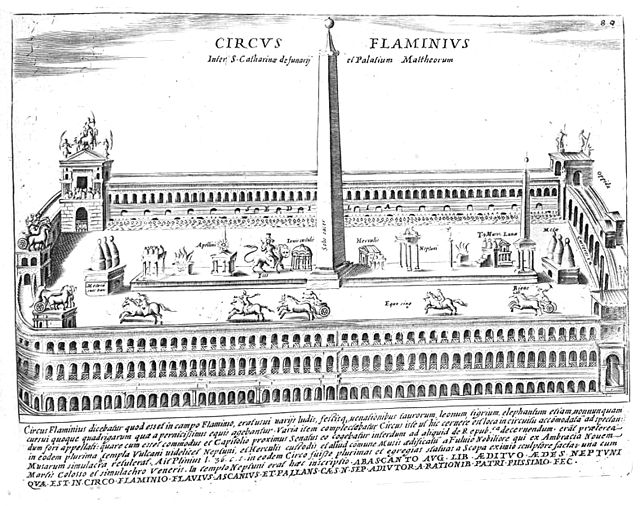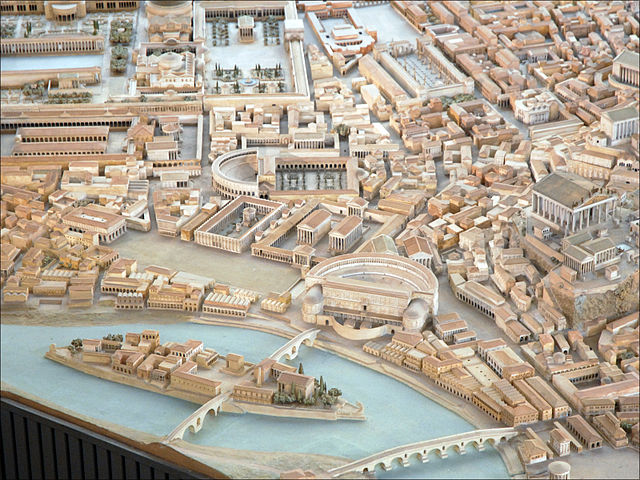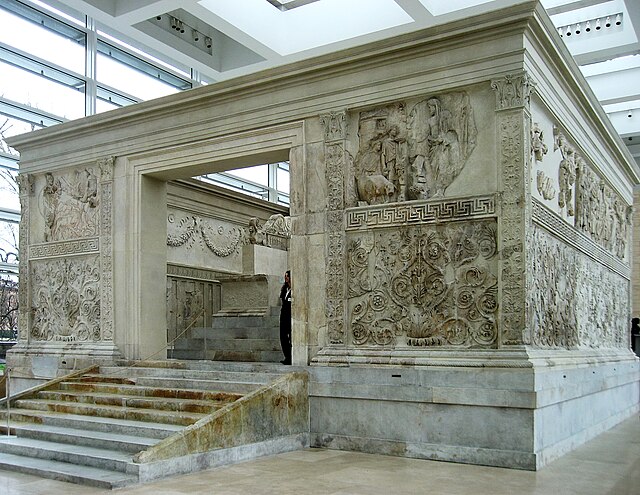The Circus Flaminius was a large, circular area in ancient Rome, located in the southern end of the Campus Martius near the Tiber River. It contained a small race-track used for obscure games, and various other buildings and monuments. It was "built", or sectioned off, by Gaius Flaminius in 221 BC. After Augustus divided the city into 14 administrative regions, the Circus Flaminius gave its name to Regio IX, which encompassed the Circus and all of the Campus Martius west of the Via Lata.
Fanciful engraving of the Circus Flaminius by Giacomo Lauro in 1641
The plaza of the Circus Flaminius (left of the Theatre of Marcellus in the center), according to Italo Gismondi's model
The Campus Martius was a publicly owned area of ancient Rome about 2 square kilometres in extent. In the Middle Ages, it was the most populous area of Rome. The IV rione of Rome, Campo Marzio, which covers a smaller section of the original area, bears the same name.
Model of the ancient Campus Martius, seen near the lower left of the picture, around AD 300. When the Assembly of the Centuries used to vote on the Field of Mars in the Roman Old Republic, it had been an area outside the Pomerium, the exact boundaries of which have not been preserved. By this time, however, it was a perfectly rectangular field, surrounded by buildings very much inside the city proper.
The Pantheon and the Fontana del Pantheon, a landmark of the Campus Martius since ancient Rome
Ara Pacis Augustae, the "Altar of Augustan Peace", as reassembled
View of the opposite side Tellus Panel at the left and Roma Panel at the right






